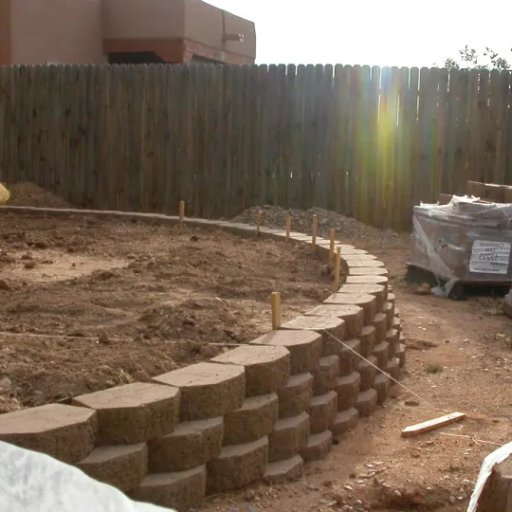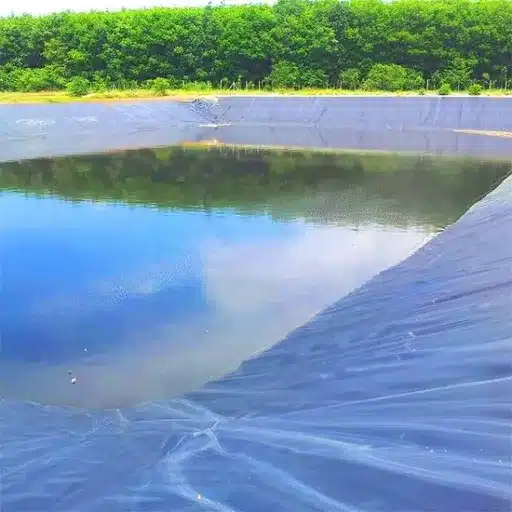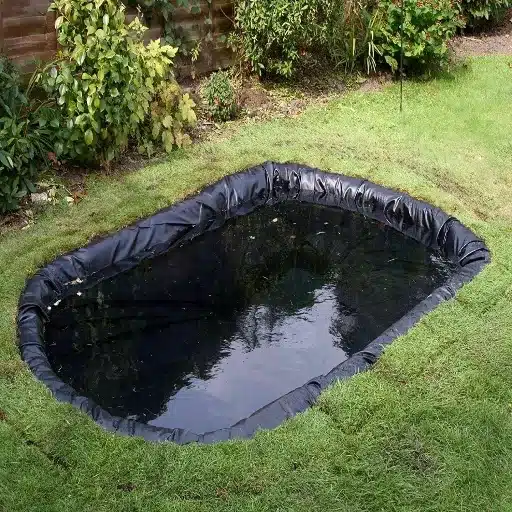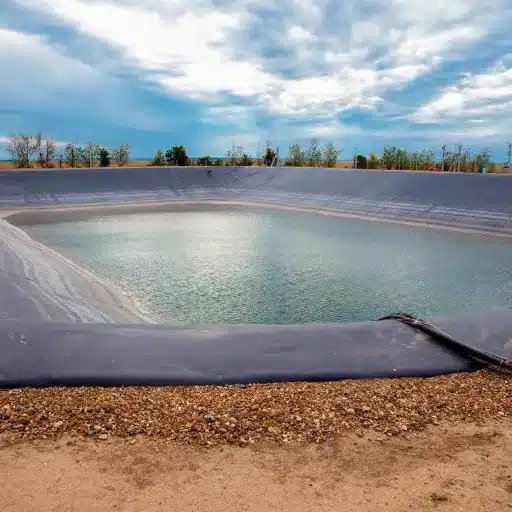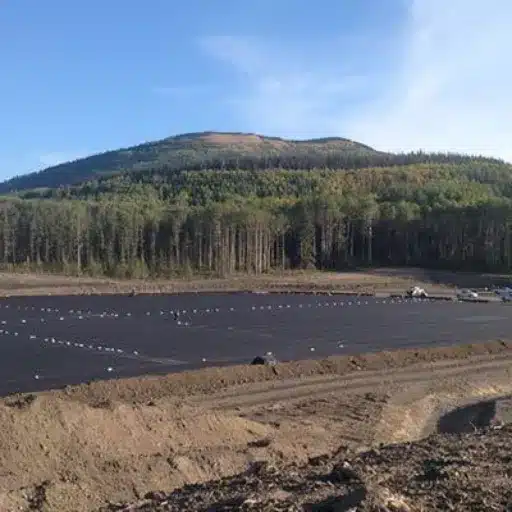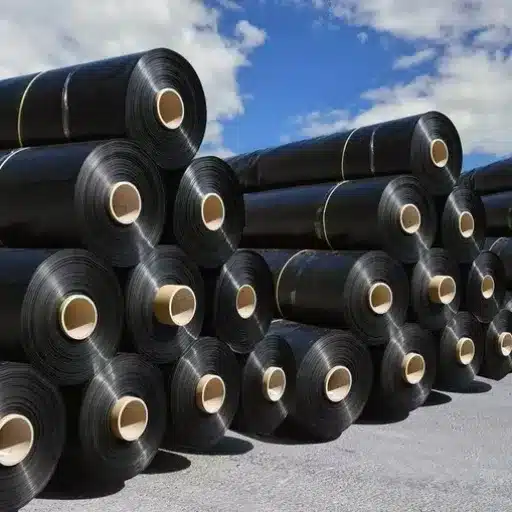Retaining walls in landscape design blend together utility and aesthetics and can interfere with either side depending on a simple module. They keep the soil behind the wall from eroding while allowing endless possibilities to beautify or organize the exterior space. Retaining wall blocks provide a versatile solution for terrace creation on a steep lawn, garden bed framing, or dimensioning of a property. In this article, we will look into landscape design with retaining walls, their benefits, and some useful tips on how to better utilize such a sturdy and stylish feature.
The idea of retaining walls
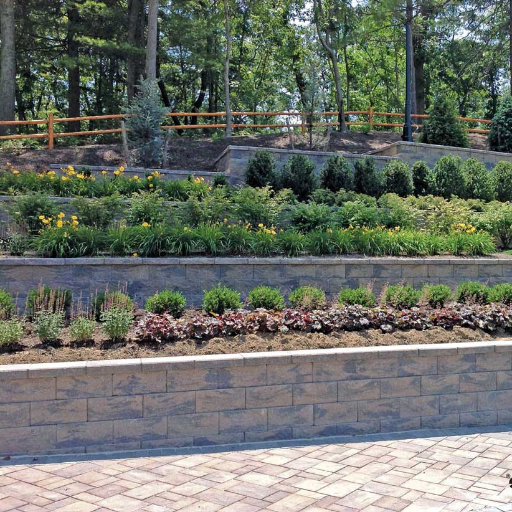
Retaining walls are structures designed to keep soil from sliding down and prevent erosion. In landscape design terms, these walls may be used to corrugate or level an area on a slope, for supporting garden beds, or simply for the enhancement of terrains that are irregular by nature. As they also can be made of concrete blocks, natural stone, or timber, these retaining walls lend a functional yet aesthetically pleasant structure to outdoor areas. Managing soil and water runoff along the wall helps in protecting your property from deterioration as well as in utility enhancement.
Remedies against Retaining Walls
A retaining wall is a specialty force applied to keep soils in place on a sloped terrain preventing erosion and managing land efficiently. They make use of flat areas and shallow gradients by staging the steep grades, thus being important for landscaping, construction, and agriculture. In construction practice, walls are modernbiomodern restorative elements used to enhance the functionality and aesthetic appeal of the outdoors.
Depending on the design and structural need, they will be built of anything, starting with concrete blocks, natural stones, bricks, timber, and even reinforced concrete. With the evolution in modern technology, eco-friendly options like geosynthetics and modular blocks are substituting traditional materials for sustainable construction. Retaining walls are of varying heights, and many states or regions require permits for those standing above 4 feet for safety and structural considerations.
In view of recent observations,”_retaining walls are great at the management of water runoff and soil erosion, especially in conditions where flooding, unpredictable weather events have been occurring within localities.”_For installation of appropriate drainage within a retaining wall, one can prevent water build-up and pressure-imposed damages on the walls to extend the life of the structure. Statistically, properly designed and constructed retaining walls can provide stability to a property by as much as 30 percent, particularly in erosion-affected regions.
When planning a retaining wall, a number of considerations such as soil type, slope gradient, drainage of water, and expected loads must be adequately attended to for both the durability and safety of the structure. Advanced engineering methods are usually employed by professionals to design these walls, such as those based on gravity walls, cantilever support, or anchored walls, which not only allow the walls to carry a relatively heavy load but also look elegant.
Categories of Retaining Walls
Gravity Retaining Walls.
Works by gravity walls against pressure from soil backfills in weight and resistance. The set of walls is generally constructed of concrete, natural stone, or brick. The most recent data suggests that gravity walls would usually be suitable for less than 10 feet, but through selective reinforcement, they can be made more substantial.
Cantilever Retaining Walls.
In some manner, a cantilever wall consists of vertical and horizontal components that convert the soil load into downward pressure exerted through its base. With the advancements in modern engineering, good use can be made of prestressed concrete and steel reinforcements that promise higher levels of durability. Cantilever walls can hold large loads of soil if constructed with the highest standards and are most commonly used in areas with mid-height slopes.
Sheet Piling Retaining Walls.
They are good for soft soils and areas of limited space. Sheet-piling walls are made out of steel, vinyl, or timber planks driven deep into the earth. New technologies have enhanced their strength and corrosion resistance via hybrid materials, making them adaptable for coastal and urban uses.
Anchored Retaining Walls.
Anchored walls are further supported by cables or stays that are anchored into the soil or the rock behind the wall for support. According to newer studies, keeping in view soil conditions and design, using anchored systems is among the most effective for tall or slender retaining walls in challenging terrains, which to a great extent oftentimes exceed 20 feet in height.
Gabion Retaining Walls.
Gabion walls are baskets of wire mesh filled with rocks. They have grown in popularity due to their eco-friendliness and integration capacity with native landscaping. Gabion are a cheap solution for drainage, greatly lessening hydrostatic pressure. Gabion walls have been demonstrated to successfully stabilize slopes under heavy rainfall.
Each retaining wall type serves the needs of something, and the choice of designs depends on the demands of the locality. Computer-aided design and material science innovations have, in recent times, significantly enhanced these structures’ capabilities, ensuring functionality and aesthetic appeal.
Retaining walls in landscape design
Retaining walls are some of the main components in modern landscape architecture. They are designed for both functional and decorative reasons. Studies and industry reports have revealed that concrete retaining walls are the most common ones in use because of their strength and versatility. These walls can last 50-100 years with proper maintenance; segmental retaining walls made of modular concrete blocks can withstand loads up to 25 tons per square foot and can be used for commercial and residential purposes.
Environmentally friendly materials such as recycling aggregates and concrete binders are increasingly gaining attention for use in retaining wall construction to limit environmental footprints. The general design includes features for irrigation so that drainage will be appropriately managed, thereby reducing erosion risks and increasing the longevity of the retaining walls. Data from several urban planning case studies show that appropriate drainage can reduce soil erosion caused by retaining walls by more than 80 percent within high precipitation areas.
Retaining walls are now treated aesthetically, with textured finishes, natural stone veneers, and custom colors used to marry them with the surrounding landscape. At the same time, planting on the walls via vertical gardens or creeping plants will greatly enhance their look, thereby encouraging the promotion of biodiversity. The above innovations demonstrate how retaining walls strive for an efficient balance between engineering priorities and environmental and visual needs.
List of Benefits That Retaining Walls Provide
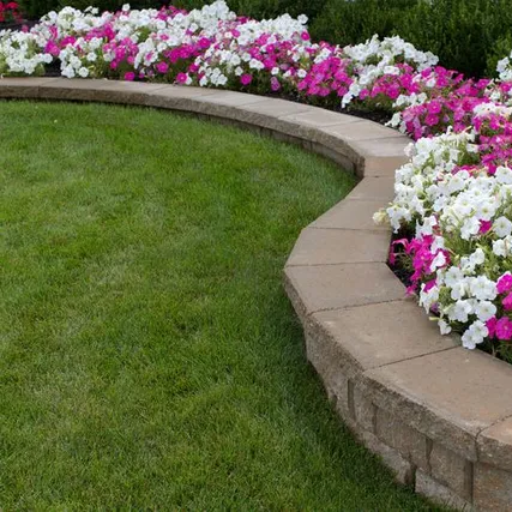
Retaining walls play numerous roles in landscaping, as they prevent soil erosion, provide leveled spaces for gardening or other outdoor activities, and create a spectacular view of the property. They hold the soil, promote drainage, and may be built in a design that fits well with the natural surroundings-cleanly marrying function with beauty.
Creating a Cosy Landscape for Outdoor Activities
While retaining walls are primarily utilitarian structures, they have increasingly been brought into landscaping schemes in the new millennium. Trends in an industry that made over $120 billion in the U.S. in revenues in 2022 are testament to America embracing the enhancements of outdoor living spaces. Retaining walls are a huge foothold in tiering gardens, patio areas, and walkways and thereby allowing homeowners to make full use of the space that would otherwise be inaccessibly sloped or uneven land.
Modern trends in retaining wall construction now call for sustainable and eco-friendly materials such as permeable concrete and recycled stone, which help facilitate proper drainage and lessen environmental impact. Furthermore, these retaining walls may be outfitted with LED lighting, irrigation systems, or even vertical gardens, enhancing their aesthetic appeal and usefulness simultaneously. It has been proven that outdated open spaces with various modern controlled features, such as retaining walls, can push the value of a property an average 15%, transforming it into a worthwhile investment in the property enhancement from an aesthetic and practical standpoint.
Controlling Slopes and Erosion
Slope management and erosion control stand at the core of sustainable landscape design. Uncontrolled erosion can lead to soil depletion, water pollution, and various other hazards, thus making it a crucial issue. According to recent statistics cited by the Environmental Protection Agency (EPA), almost 30 billion tons of topsoil gets eroded by soil erosion every year, affecting a great deal of agricultural productivity and destroying ecosystems.
One of the best solutions included the use of retaining walls combined with vegetation to stabilize the slopes. There is evidence that sediment runoff can be diminished up to 40% with engineered barriers constructed from natural or recycled materials. Another method reduces erosion rates by up to 50% through the root and water absorption effects of vegetative covers, like native grasses and shrubs.
Advanced erosion control technology, including geotextiles and erosion control blankets, is gaining popularity as well. The big advantage is that they provide instant stabilization on the most stubborn of slopes, while still allowing vegetation to set in over time. According to a report from an industry-leading geosynthetics manufacturer, short- to medium-term mitigation results from geotextiles have been very successful on erosion-prone slopes with grades in excess of 30 degrees, showing a reduction in sediment displacement of approximately 85%.
With an approach and materials that preserve soil life and promote biodiversity while protecting streams and rivers, landscape architects and landowners can create beautiful vistas and more stable environments.
For Flower Beds and Patios
One of many exterior applications that can be employed in flower bed and patio designs for everyday use and outdoor art enhancements is to beautify the surrounding space. Flower beds provide an intense splash of color and changing texture to the already vibrant yard, which is favorable to biodiversity by way of attracting pollinators, such as bees and butterflies. According to the National Wildlife Federation’s report, gardens with native plants support up to three times the pollinator population as non-native plants do-an important point to consider when designing flower beds.
Patios are open enclosed areas meant for outdoor lounging and entertainment. With an ever-increasing trend, more and more people prefer eco-friendly products like permeable pavers, which can infiltrate water into the land and reduce runoff, thus safeguarding the ecosystems around the patio. A survey conducted by Houzz for landscaping in 2022 acknowledged that over 75% of homeowners pursued sustainable materials while upgrading their outdoor areas. Other aesthetic and functional features that could be included would give more appeal and matching utility to the patios.
Designing will work well in drawing their own details. Proper soil preparation and good drainage are vital to the longevity of flower beds, whereas patios require a firm base to guarantee structural integrity. Coupled with good planning are online resources and tools, such as 3D landscaping software recommended by Google’s “Grow Your Garden” initiative, which will result in designs that blend creative expression with practical use. Conjoining well-thought-out plans and up-to-date tools and sustainable materials will help homeowners in all their efforts to turn their backyards into welcoming, usable, and environmentally friendly places.
Types of Retaining Wall Solutions
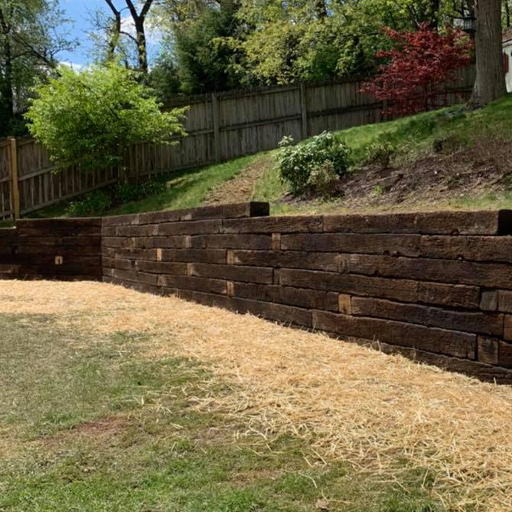
Following are types of retaining wall solutions which I can contemplate, such as gravity walls, cantilever walls, anchored walls, and sheet pile walls. Each type has its own advantages depending on the particular needs of my landscaping project regarding the soil conditions, height requirements, or even aesthetic preferences.
Concrete Retaining Walls
Concrete retaining walls are widely selected due to the presence of durability, strength, and versatility. They can be installed in several ways, including poured-in-place, precast concrete panels, or interlocking concrete blocks. According to recent statistics, with diligent maintenance, concrete walls can last for more than 50 years and, therefore, are the best makeup for a long-term investment. They also have the feature of being good as steel-reinforced concrete walls that can stand heavy loads where heavy soil pressure is contemplated or on steep terrain.
Recent trends in retaining wall construction show an emphasis on eco-friendly concrete mixes. For instance, replacement of cement with supplementary cementitious materials like fly ash or slag can contribute to reducing environmental impact. Research shows that using such materials can lead to carbon emissions reduction by 40%, thereby supporting sustainability goals while at the same time retaining structural integrity.
Concrete retaining walls also allow for modern design possibilities. Advanced construction techniques, such as being stamped or stained, can make a concrete wall highly decorative, mixing function and unique landscaping styles. In addition, with a good drainage system set-up that includes weep holes or drainage pipes, concrete walls can be ensured long life even in areas that receive heavy rainfall.
Natural Stone Retaining Walls
Natural stone retaining walls have long been recognized because of their beauty and timeless qualities. They offer a unique rustic charm that blends well into the natural landscape. Based on recent data, natural stone remains an attractive option because of its environmentally friendly nature—being recyclable and long-lasting. Other data indicate that if constructed in a good way, natural stone walls require little maintenance and can stay strong for at least 50 years, thus beneficial for both potential investments in residential and commercial projects.
Functional-wise, natural stones are well-known for their high strength to withstand massive pressure of soil and water. It can also drain water better than other materials, which reduces the risk of hydrostatic pressure build-up. Newer construction techniques such as interlocking systems and geotextiles have increased the stability and versatility of natural stone walls to suit quite a varied range of terrains. Besides, sourcing stone locally will further reduce the cost and carbon emissions, promoting the concept of green build.
Steel Retaining Walls
Steel walls have retained their tremendous popularity due to their strength, durability, and modern appeal. Having been constructed from a variety of raw materials, such as galvanized steel, corten steel, or stainless steel, they have the ability to withstand immense pressure from soil and water, sometimes making them suitable choices for unsuitable environments where heavy loads are expected. Industry data, however, shows that the estimated lifespan of a genuine galvanized steel structure extends between 30 and 75 years, with the environment contributing largely to the aging processes, such as moisture and soil composition, whilst corten steel provides a weathered, rust-like finish that will in fact serve to reduce corrosion as time goes on.
Iron retaining walls are highly customizable. They may be created to any desired shape and size for use in many types of construction, both residential and commercial. On the other hand, innovations in the manufacturing process for steel panels mean that now they are produced with less thickness and weight but without any compromise in strength, thus reducing material usage as well as facilitating easier installation. For instance, pre-fabricated steel retaining walls have gained enormous popularity in the urban landscaping sphere because of their speedy erection and cost-effectiveness.
Which are nevertheless necessary to maintain on occasion, such as in the application of anti-corrosion protective coatings, in order to retain their value if placed in locations where high acidity or moisture are prevalent. Studies indicate 20% prolonging of the lifespan if steel walls undergo periodical maintenance, hence proving to be cost-effective in the long run. Steel retaining walls hence give not only functionality but also that glide-modern look to outdoor spaces and thus are a favored choice of many modern design projects.
Step-by-Step Guide to Building Your Own Retaining Wall
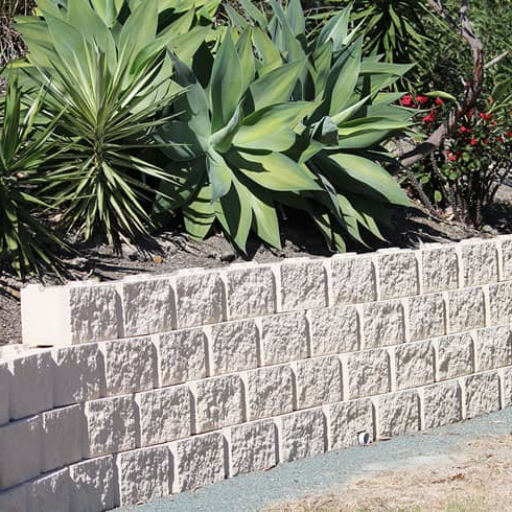
To summarize briefly, I would say protecting steel retaining walls by regular maintenance activities such as applying anti-corrosion coatings especially in acidic or damp environments remains the most prominent method of extending their life while maintaining their functionality and modern aesthetics.
Planning Your Retaining Wall Project
Planning should be properly done before a retaining wall project is undertaken to ensure that the retaining wall will serve its function in a timely manner for as long as intended. Make an assessment of your landscape needs and start by determining how the retaining wall will serve. Soil erosion, forming a working platform, or even just neat looks for the amenity–what is it that needs to be addressed by the retaining wall? Then, make an analysis on the nature of the soils in the area: sandy ones drain better, whereas clayey types may demand strong reinforcements. Another important consideration should be the dimension of height and length of the wall since a wall that is generally over 4 feet in height will carry the need for acquiring permits and having professional engineering oversight in many jurisdictions.
Consult local regulations because codes for construction and zoning laws vary depending on your locality. Then, specify the materials for the wall, either concrete blocks, natural stones, or steel, according to your goal of design and budget. By recent trends, concrete retaining walls are cheap and durable, costing against $20 and $45 per sq. ft. depending on the complexity of design and quality of materials.
Drainage is usually the most often overlooked yet the most crucial one. Without proper drainage, pressure exerted by water against the wall beyond the design limit may cause structural failure. Backfilling with gravel, installing perforated pipe, and incorporating weep holes are steps that will ensure proper management of water flow. Finally, do not forget to account for the project timetable. A regular-sized retaining wall for a small yard can generally be finished by a crew of professionals within three to five days; the work will take longer if you set out to do it yourself, depending on your experience level and tools.
Good planning not only results in retaining walls that are strong but also help you reap more from your investment in retaining walls by avoiding expensive repairs or even replacements as one alternative.
Choosing the Right Retaining Wall Materials
Choice of retaining wall materials is vital for its lifespan, functionality, and appearance. Each material has a particular character suitable for different requirements and budgets:
Concrete Blocks: Pre-engineered concrete blocks rank among the most popular materials for retaining walls because of their durability and easiness of installation. They can withstand very high pressures and come in many colors and finishes to match the surrounding landscape or outdoor space. Other recent trends indicate concrete block walls will cost you on average between $20 and $40 per square foot, depending on customization.
Natural Stone: Appreciated for eternity, natural stone offers a much more organic look. It is very durable but is generally more expensive than most other options. Prices usually start at $30 per square foot but may go up depending on the stone type and availability in your area.
Timber: Timber walls for retaining purposes are cheap and easy to install, thus making them a very popular choice for Do-It-Yourself (DIY) projects. However, timber walls do need maintenance quite frequently to avoid rot and usually last anywhere from 10 to 20 years depending on wood type and climate. The price for timber retaining walls is generally somewhere in between $15 and $25 per square foot.
Poured Concrete: This will offer you the highest design flexibility of all wall types. It is one of the strongest wall materials that can stand for decades if constructed properly. Poured concrete retaining walls usually cost anywhere between $25 and $50 per square foot, with top-end custom finishes or design making for a bigger investment.
Gabion Walls: These are walls constructed by stacking wire mesh cages filled with rocks or a suitable aggregate. Gabion walls are green, highly customizable, and durable. The average price for gabion walls is somewhere in the range of $10 to $40 per square foot, depending on the type of cage and fillers used.
When selecting materials, you should consider soil conditions, drainage requirements, and climatic conditions of the locality. Having the right consultation would give you assurance that you make the right choice tailored towards your project.
Construction Techniques for Block Retaining Walls
Block retaining walls enjoy popularity as versatile, durable, and attractive structures. Achieving success constructing block retaining walls calls for careful planning and correct implementation of techniques regarding stability and longevity. Remember these steps and considerations regarding constructing block retaining walls:
Site Preparation
Commence with marking the wall layout. Consider the site for any obstructions, slope angles, and drainage requirements. Remove vegetation, debris, and topsoil within the construction area. Excavate across the site to make a level base, as good leveling is the key to a stable wall. Stepped walls may require more excavation at each step level.
Foundation and Base Layer
One of the most important aspects of wall construction is providing a base that will give maximum stability. Excavate a trench about 6 to 12 inches deep and 18 to 24 inches wide, dependent upon the height of the wall. Fill the trench with well-compacted gravel or crushed stone for a sturdy base. Most authorities suggest a layer of at least 4 to 6 inches of base material, well compacted by means of a plate compactor.
Laying the First Course
The first row of blocks must be laid with precision, as it determines the alignment of the entire wall. Blocks are placed directly on the prepared base and carefully leveled, each block sitting evenly. For stability purposes, the first course may also be embedded partly below ground level when the wall is higher than 4ft.
Stacking and Backfilling
Blocks should be stacked in staggered rows with overlapping joints to provide greater structural strength. Interlocking blocks should be used where possible, as they give greater resistance to movement when compared to regular blocks. Behind every run of blocks, backfill with gravel or crushed stone to allow good drainage and to reduce hydrostatic pressure. It is advisable to backfill in 6-inch increments and pack well after each layer is installed.
Good Drainage
Without good drainage, water will collect behind the wall, weakening it, and it is further important in higher walls. Place draining pipes behind the wall base, or use geotextile fabric to prevent water retention. For walls over 3 ft, more drainage ports will be needed to discharge water.
Finishing the Wall
Capstone or decorative finish may be used at the top of the wall to enhance the appearance and give protection. Use construction adhesive to glue the capstones into place. If your wall is over 4 feet high, ensure that it complies with local building codes, and consider using anchoring or tiebacks for additional support.
Common Challenges Faced Pertaining to Retaining Walls
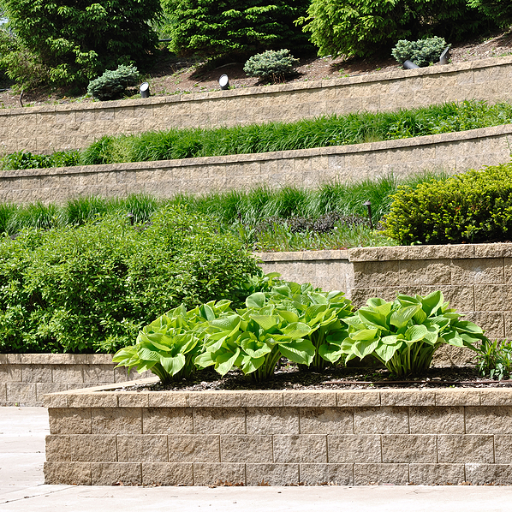
Drainage has to be managed properly while making retaining walls, and if not managed properly, water buildup behind a wall can spoil its integrity. I use the appropriate drainage treatment method while doing it, sifting through gravel for backfill and incorporating a drain pipe, so that water drains away from the wall. Soil type and the height of the wall present other interesting factors that I watch for, while making the necessary adjustments for stability and in accordance with the local building code.
Dealing with Backfill Issues
Backfill is important to the working and durability of retaining walls. Improper backfill may result in imbalance in pressures, instability of the wall, and in the long run, failure. Backfill should preferably be coarse-grained soils like sands or gravels since they drain much better than the fine-grained soils like clays. Current codes of construction and practices in industry give the information that an impermeable layer of minimum 12 inches of well-graded aggregate backfill must be provided behind a retaining wall for proper drainage and to eliminate hydrostatic pressure.
Compaction of backfill is the second point to deal with. Studies indicate that backfill should be compacted in lifts of 6-8 inches to obtain a compaction of not less than 95% by mechanical means such as a vibratory roller. Proper compaction controls the problem of settlement so that extra loads are not created to the wall. Additional data show that placing a geotextile fabric between backfill and native soil is vital to block soil migration, which in turn prevents clogging of drainage systems.
The use of drainage pipes within the backfill area is also highly recommended. The installation of a perforated pipe at the base of the backfill, wrapped in filter fabric, will aid in the efficient removal of water. Hence, the finest materials installed coupled with proper compaction and drainage systems represent the main players in overcoming the challenges posed by backfill and ensuring the longevity of retaining walls.
Water Drainage
Water should be drained away from retaining walls to ensure their stability and longevity. Poor drainage will result in water accumulation behind the wall, which increases hydrostatic pressure and can cause it to be damaged. The adverse effect of this can be averted by using highly efficient systems and materials.
Besides that, the growing implementation of a gravel filter around a perforated pipe provides the remedy. Unlike a recently published report, gravel with grains sized from 0.5 to 1 inch will transport water efficiently while resisting clogging. Placing the perforated pipe near the bottom of the backfill site is a key parameter of hydraulic design. Furthermore, it will have a slope of about 1 to 2% to maximize the water flow speed by gravity toward the surface away from the walls.
Drainage pipes and gravel should be wrapped up with filter fabric to prevent settling of sediment into the drainage pipes. Another reasonable technique to ensure drainage from retaining walls is by sealing weep holes under the walls.
Engineering data prove that drainage systems of well design are able to cut down hydrostatic pressure exerted on walls by about 30%, reducing the weight thereby imposed on retaining walls to a great extent. Also, the integration of advanced solutions like geogrid reinforcement and modular drainage mats offers an improved basis for large scale projects, securing top-notch performance even during heavy rainfall.
Thorough consideration of these drainage systems will enhance the water management procedure and consequently reduce possible hazards to the structural integrity of the retaining wall, as well as prolong the life expectancy of the very structure. Hence, this exemplifies the importance of traditional methods morphing into modern technology to tackle environmental demands.
Preventing Soil Erosion
Preventing soil erosion is very private in maintaining the environment and the structural integrity of landscapes and construction works. Erosion consists of the washing away of lands through lunacy: water runoff, winds, and earthly men. Such erosion leads to the degradation of fertile lands, increase of sedimentation in water bodies, as well as upgrade to degradation of lands. According to recent studies, the whole world loses about 24 billion tons of fertile soil each year due to erosion, which in turn jeopardizes agricultural productivity and biodiversity.
Effective methods to go against soil erosion include creating vegetation cover, terracing, and geotextiles. Vegetation barriers hold soils and retain them with their roots, while terrace cuts down water runoff down sloping lands by forming level steps. There have been successful applications of geotextiles and erosion control blankets by about 70% in reducing soil displacement, hence, stabilizing erosion-prone areas. Great drainage systems will also help channel water flow and keep it away from heavy runoff that worsens erosion.
Implementation of land mulching, contour farming, and reforestation falls into the ambit of soil conservation. For instance, studies have demonstrated that soil covered with mulch can retain 30-50% more moisture than bare soil. Moisture retention directly reduces soil erosion caused by heavy downpours. Combining old strategies with technology like GIS mapping and soil sensors affords a precise way of monitoring and setting targeted interventions for saving soil and mitigating the rate of erosion. By integrating conventional methodology with the latest technology, sustainable land management can be achieved for the long-term health of our ecosystems.
Reference sources
1. Analytical Solutions for Internal Stability of a Geosynthetic-Reinforced Soil Retaining Wall at the Limit State
- Authors: P. Fox
- Journal: Journal of Geotechnical and Geoenvironmental Engineering
- Publication Date: October 1, 2022
- Citation Token: (Fox, 2022)
- Summary: This paper presents analytical solutions for assessing the internal stability of geosynthetic-reinforced soil retaining walls at the limit state. The study emphasizes the importance of understanding the behavior of these walls under various loading conditions and provides a framework for evaluating their stability.
- Methodology: The author employs analytical methods to derive solutions that can be used to predict the performance of geosynthetic-reinforced walls, focusing on limit state conditions.
2. Sustainable Retaining Wall Solution as a Mitigation Strategy on Steep Slopes in Soft Rock Mass
- Authors: P. Jelušič, Goran Vlastelica, B. Zlender
- Journal: Géosciences
- Publication Date: March 22, 2024
- Citation Token: (Jelušič et al., 2024)
- Summary: This article discusses the construction of retaining walls in soft rock areas prone to instability. It compares various retaining wall solutions in terms of functionality, cost, and sustainability, highlighting the inefficiency of colossal reinforced concrete walls due to high costs and CO2 emissions.
- Methodology: The study includes a model to determine the optimal height and placement of retaining walls, analyzing critical failure modes and cost-optimized solutions through a specific case study in Dalmatia.
3. A New Calculation Method of Force and Displacement of Retaining Wall and Slope
- Authors: Yingfa Lu, W. Sun, Hao Yang, Junjie Jiang, L. Lu
- Journal: Applied Sciences
- Publication Date: May 8, 2023
- Citation Token: (Lu et al., 2023)
- Summary: This paper proposes a new analytical method for calculating the forces and displacements acting on retaining walls and slopes. It aims to improve the accuracy of traditional methods by incorporating various equilibrium and compatibility equations.
- Methodology: The authors utilize numerical theoretical solutions to analyze stress distributions and displacements, applying their method to a practical example in Badong County.
Frequently Asked Questions (FAQs)
What are the best retaining wall solutions for a sloped yard?
In retaining a sloped yard, one effective retaining solution involves the placement of interlocking retaining wall blocks that provide stability to grade changes. Landscape block systems are also used in conjunction with concrete, or alone, to form appealing walls that will hold back soil and increase curb appeal.
Can I build my own retaining wall with blocks used for concrete retaining walls?
Yes, the concrete retaining wall blocks can be used to build your own retaining wall. These blocks are easy to install and come in various design schemes so you may produce an end wall that would fit great with your outdoor living areas. Make sure to follow proper installation guidelines for best results from a durability standpoint.
What options are there in the design of retaining wall systems?
Retraining walls can be designed with natural stacked stone appearance, or to be very modern looking with poured concrete walls, or treated wood to get a rustic looking wall. Each can be designed to complement the focal points of your landscape.
In what way do retaining walls enhance the functionality of outdoor living space?
Retaining walls add functionality to outdoor living spaces by leveling an area for patios, raised beds, or outdoor seating. They also create a system for drainage management and prevent soil erosion, thereby ensuring that your outdoor area remains beautiful and usable.
In choosing the right cheap retaining wall, what materials would you consider?
You might consider landscape block or some recycled materials such as railroad ties for the cheap retaining wall. They can be labeled as cheap concerning providing supports and looking attractive enough for your garden or yard.
How can I be certain that my retaining wall can resist frost?
Frost resistance of a retaining wall should be secured by the inclusion of frost footings during installation. This requires digging below the frost line and either pouring concrete or using some other material for forming a good base for the wall.
What are some creative retaining wall ideas for my garden?
Some creative retaining wall ideas for your garden include wedding flower beds into the design, using natural stone for a rough look, and integrating water features. These not only add to the aesthetics but also add function to your landscape.
Can a block retaining wall be built by the use of concrete?
Yes, concrete can be used to build a block retaining wall. Concrete retaining wall blocks are sturdy and designed especially for that purpose, providing long-lasting support while allowing for many design options to suit your landscape.

